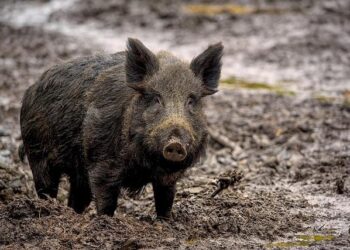In a groundbreaking discovery that adds a remarkable chapter to our understanding of early human evolution, researchers have unearthed a hominin face estimated to be over a million years old in Spain. Reported by Haaretz, this remarkable find sheds light on the physical characteristics and potential behaviors of our ancient ancestors, providing invaluable insights into the migration patterns and adaptation strategies of early hominins. As scientists continue to piece together the puzzle of human ancestry, this fossilized visage offers a tangible link to a distant past, prompting both excitement and further inquiry into the conditions that shaped our evolutionary journey. With each new discovery, the story of human evolution becomes increasingly complex, inviting both scholars and the public to reflect on the intricate tapestry of life that has led to modern Homo sapiens.
Discovery of Ancient Hominin Face Unearthed in Spain
The recent excavation in a cave in northern Spain has led to a remarkable discovery: the partially fossilized face of a hominin that dates back over a million years. This find not onyl adds to the rich tapestry of human evolution but also provides critical insights into the physical characteristics and lifestyle of our ancient ancestors.Researchers believe that the features observed in this face may represent a previously unidentified species, offering a glimpse into the diverse hominin lineage that once roamed the Iberian Peninsula.
Preliminary analysis suggests several striking features of the specimen, which has sparked excitement among anthropologists. Key attributes include:
- Pronounced brow ridges: Indicative of strong muscular attachment and perhaps important for social interactions.
- Jaw structure: A robust jawline that may provide insights into the dietary habits of this ancient population.
- Nasal cavity shape: Offering clues about climate adaptation during the period when these hominins lived.
This remarkable find underscores the importance of the region in our understanding of early human development and evolution. Ongoing studies aim to further analyze the specimen and uncover more about the lives and environments of these early inhabitants.

Significance of the Find in Understanding Hominin Evolution
The discovery of a hominin face in Spain, dating back over a million years, offers profound insights into the evolutionary narrative of our species. This remarkable find not only enhances our understanding of early human diversity but also raises critical questions about the environmental and adaptive challenges faced by our ancestors. The facial structure presents distinct morphological features that suggest the complexity of hominin evolution, highlighting variations that may reflect different survival strategies adopted by groups inhabiting diverse ecological niches. This find is notably significant in the context of the European fossil record, where instances of such ancient remains are relatively rare.
In examining the implications of this discovery, researchers are now able to:
- Refine evolutionary timelines: The age and characteristics of the find may recalibrate our understanding of when different hominin species emerged and their geographic distributions.
- Explore interspecies interactions: The features observed could provide clues to interactions between emerging hominins and other species, influencing migration patterns and behavioral adaptations.
- Investigate climate resilience: Analysis of the physical traits may reveal how these early humans adapted to the changing climates of prehistoric Europe, a key aspect of our evolutionary journey.
| Characteristic | Significance |
|---|---|
| Facial Features | Indicates diversity in hominin adaptations |
| Geographic Context | provides insights into early hominin movements |

Insights from Cutting-Edge Archaeological Techniques
The recent discovery of a hominin face in spain, dating back over a million years, highlights the transformative impact of innovative archaeological methodologies on our understanding of early human ancestry. By employing advanced imaging techniques, researchers have been able to analyze the intricate facial structures of ancient remains that were previously regarded as too fragile for extensive study. These methods, including 3D modeling and digital reconstruction, allow scientists to visualize the anatomy with unprecedented detail, shedding light on the morphological features that distinguish our early relatives from other hominin species.
Moreover, cutting-edge techniques such as DNA analysis and isotopic studies are redefining how we interpret the diets, habitats, and migratory patterns of these ancient beings.For instance, isotopic data can reveal insights into the types of foods consumed, which, in turn, can inform theories about social structures and environmental adaptations. The table below summarizes the notable techniques and their applications in the ongoing study of paleolithic archaeology:
| Technique | Application |
|---|---|
| 3D Modeling | Reconstructs anatomical structures from fossil remains. |
| DNA Analysis | Examines genetic relationships and evolutionary lineage. |
| Isotopic Studies | reveals dietary patterns and environmental conditions. |
| Ground-Penetrating Radar | Locates sub-surface archaeological features. |

Implications for Human Migration Patterns in Prehistoric Europe
The recent discovery of a hominin face over a million years old in Spain provides critical insights into the migration patterns of prehistoric populations across Europe. This find suggests that early human ancestors were more adaptable and might have ventured into diverse environments much earlier than previously assumed. Their ability to navigate varied terrains indicates a complex interaction with both the climate and available resources, signaling a need to reassess our understanding of early human migration dynamics. the implications of such adaptability may include:
- Extended Range of Movement: Evidence suggests broader geographic distribution of hominins than earlier believed.
- Environmental Adaptation: The presence in diverse habitats may indicate sophisticated survival strategies.
- Social structures: A possibility of organized groups to enhance survival in unfamiliar territories.
In evaluating the implications of this discovery, it becomes essential to consider the factors influencing migration, such as climate change and resource availability. Climate shifts likely acted as both a catalyst and barrier, creating a push-pull effect that shaped human movements. Furthermore, archaeological data indicates that social cohesion among groups may have played a vital role in ensuring successful migration, as seen in the reliance on shared knowledge and collaborative hunting strategies. A summary of potential factors influencing these migration patterns is presented below:
| Factor | Impact on Migration |
|---|---|
| Climate Change | Facilitated movement towards more hospitable regions. |
| Resource Availability | encouraged settlement in areas rich in food and materials. |
| Social Cohesion | Strengthened group dynamics for risk-taking in unfamiliar territories. |

Future Research Directions and Preservation Considerations
The recent discovery of a hominin face over a million years old in Spain opens up exciting avenues for future research. Scientists are keen to explore the implications of this finding on our understanding of human evolution.Key areas of exploration include:
- Genetic Analysis: Extracting and analyzing ancient DNA from the remains can illuminate connections to modern humans and other hominins.
- Impact of Environment: Studying the geological context can reveal how climate change and environmental shifts influenced hominin development.
- Cultural Insights: Investigating associated artifacts can provide a glimpse into the social structures and lives of early humans.
Preservation considerations are equally vital. The delicate nature of archaeological finds necessitates rigorous measures to protect these invaluable specimens. Critical steps include:
- Site Protection: ensuring that excavation sites are shielded from natural erosion and human interference.
- Controlled Access: Limiting the number of visitors and researchers to prevent damage or contamination.
- Digital Archiving: Utilizing advanced imaging technologies to create detailed 3D models that help in the ongoing study while reducing physical handling of the specimens.
| Preservation Strategies | Description |
|---|---|
| Site Monitoring | Regular assessments to identify and address environmental threats. |
| Public Education | Engaging local communities in heritage preservation efforts. |
| Research Collaboration | Working with international teams to ensure best practices in preservation. |
In Retrospect
As researchers continue to unearth the rich tapestry of human evolution, the discovery of a hominin face over a million years old in Spain marks a significant milestone in our understanding of early human ancestors. This remarkable finding not only sheds light on the morphological features of prehistoric hominins but also offers valuable insights into their way of life and adaptation to ancient environments. The implications of this discovery extend beyond mere aesthetics; they challenge existing narratives and encourage a reevaluation of the migratory patterns of early humans across Europe. As the scientific community eagerly anticipates further analysis and potential discoveries at the site, this hominin face serves as a striking reminder of our shared ancestry and the complex history that continues to shape our understanding of what it means to be human.
















